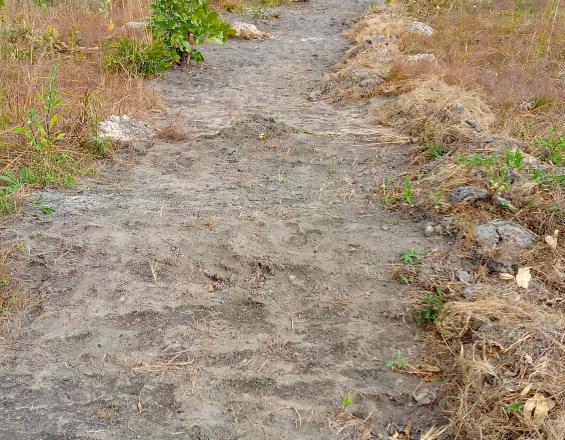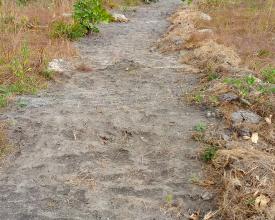efforts de restauration des terres forestières

Le Malawi compte une population totale d'environ 18 millions d'habitants, dont environ 12 % ont accès à l'électricité. Une grande partie de la population utilise le bois de chauffage et le charbon de bois comme sources d'énergie. De ce fait, nos réserves forestières continuent de diminuer à un rythme accéléré. À cet égard, le département des forêts s'est associé à Tetra Tech Malawi pour travailler avec les communautés qui se trouvent à proximité des réserves forestières. L'objectif est de relever les défis de la dégradation des forêts par le biais d'un projet de cuisine moderne pour des forêts saines (MCHF) en fournissant des services forestiers améliorés, tout en promouvant des entreprises favorables à la sylviculture. Depuis le début du projet, les communautés locales ont réussi à protéger la forêt des incendies et à assurer la régénération naturelle des arbres tombés, de sorte que les points chauds identifiés se sont rétablis et continuent de se rétablir. Les ressources forestières continuent d'assurer un flux régulier d'eau dans les rivières à des fins d'irrigation.
Contexte
Défis à relever
Les interventions du projet ont abordé les questions des incendies, de l'abattage illégal d'arbres pour le charbon de bois et le bois de chauffage, de l'infertilité des sols, de la gestion de la biodiversité et de la dégradation des terres. La couverture totale de la forêt a nécessité des activités d'apiculture qui ont permis d'améliorer les moyens de subsistance sur le plan socio-économique.
Emplacement
Traiter
Résumé du processus
Les blocs susmentionnés se complètent systématiquement pour atteindre un objectif commun, à savoir mobiliser et former les communautés locales à tous les aspects des initiatives du projet. Étant donné que les projets sont mieux mis en œuvre par d'autres parties prenantes dans les régions, il est également crucial d'impliquer tous les partenaires dans la région. C'est pourquoi les agences gouvernementales et d'autres ONG sont impliquées. L'implication du personnel gouvernemental vise à assurer la durabilité du projet une fois qu'il aura pris fin. Enfin, il est nécessaire que l'ordre public adopte des règlements pour assurer la gestion quotidienne des ressources forestières. À cet égard, les dirigeants locaux sont impliqués pour assurer une mise en œuvre harmonieuse.
Blocs de construction
- Développement d'alliances et de partenariats
Il s'agit d'un paramètre très important car il implique de réunir au moins deux institutions pour travailler à la réalisation d'un objectif du projet. Chaque organisation a des rôles et des activités différents, mais ces rôles différents visent à atteindre les mêmes objectifs.
Facteurs favorables
- Réunions fréquentes des parties prenantes
- Ouverture et volonté de partager les idées
- Mise en place de plans d'opérations
Leçon apprise
Lors de la mise en œuvre de ce bloc, on a découvert que l'impact était énorme parce que chaque activité faisait l'objet d'une attention particulière. Cela s'explique par le fait que les rôles de chaque institution sont clairement définis. Le partage des rôles a permis d'éliminer la pression exercée par l'autre partenaire de mise en œuvre. Mais nous avons également appris que l'absence de réunions fréquentes pour partager des idées a entraîné une mauvaise prestation de services.
- éducation, formation et autres activités de développement des capacités
L'objectif de ce bloc est de s'assurer que les communautés disposent des connaissances et de l'expertise appropriées concernant cette initiative de projet particulière, afin qu'elle soit maintenue à long terme après la fin du projet. Cela implique une formation sur le terrain et la mise en place de champs de démonstration qui servent de points d'apprentissage pour les communautés. De cette manière, il est facile pour les communautés de s'engager dans une initiative qui a bien fonctionné dans leur communauté.
Facteurs favorables
- Disponibilité de fonds pour l'achat de matériel de formation et de rafraîchissements pour les réunions communautaires.
- Capacité des communautés à changer d'attitude à l'égard d'interventions particulières.
- Facilitateurs bien formés.
Leçon apprise
Nous avons appris que le personnel gouvernemental déjà présent dans les zones de planification de l'extension était le facilitateur approprié pour certaines activités. Leur participation a également facilité le suivi continu des activités longtemps après la fin du projet.
- Exécution et poursuites
Ce bloc est très important car il garantit le respect de la loi et de l'ordre dans les communautés. Il s'agit de mettre en place des règlements qui guident la mise en œuvre de l'initiative du projet. Il s'agit également de mettre en place des sanctions contre certaines activités illégales, par exemple la coupe d'arbres sans autorisation. Ces lois sont mieux appliquées lorsque les communautés les établissent elles-mêmes avec l'aide de l'agent de vulgarisation.
Facteurs favorables
Les facteurs d'habilitation comprennent : l'implication des chefs traditionnels et l'élaboration des lois par l'ensemble de la communauté.
Leçon apprise
Nous avons appris que des sanctions sévères à l'encontre des contrevenants étaient nécessaires pour dissuader d'autres personnes de commettre des infractions similaires.
Impacts
Le projet a engagé les communautés dans des activités telles que la régénération naturelle assistée et la prévention des incendies dans les réserves forestières et les zones forestières villageoises, ainsi que la régénération naturelle gérée par les agriculteurs et la conservation des sols et de l'eau sur les terres coutumières. Dans les zones forestières ciblées, les pousses fleurissent actuellement et les arbres adultes sont protégés des incendies et de l'abattage illégal pour le bois de chauffage et le charbon de bois. Les terres autrefois dégradées abritent aujourd'hui une biodiversité variée. Des efforts pour se lancer dans l'apiculture sont en cours grâce à la bonne gestion des ressources forestières, ce qui profitera aux communautés locales sur le plan économique.
Bénéficiaires
Il s'agit principalement des communautés entourant la réserve forestière, et plus particulièrement des CVGRN de Ndemera et de Nthenda, ainsi que de leurs membres.
Objectifs de développement durable
Histoire
Comme indiqué ci-dessus, les solutions ont consisté à faciliter la régénération naturelle assistée dans les zones forestières ainsi que la régénération naturelle gérée par les agriculteurs dans les terres agricoles. Il s'agit d'approches environnementales conviviales, en particulier au niveau local. Les sciences de l'environnement sont ma spécialité et il m'est facile de faciliter ces approches sur le terrain. J'ai toujours travaillé avec les communautés locales dans mes emplois précédents lors d'interventions similaires. Par exemple, lorsque j'étais dans le district de Mangochi et que je travaillais sur un projet d'alimentation et de nutrition, j'ai personnellement engagé plusieurs communautés dans la régénération naturelle gérée par les agriculteurs et cela a fonctionné. Je l'ai fait pendant cinq ans, ce qui a eu pour effet de faire pousser des arbres indigènes sur leurs terres agricoles, contribuant ainsi à la couverture du sol et à la lutte contre l'érosion.
